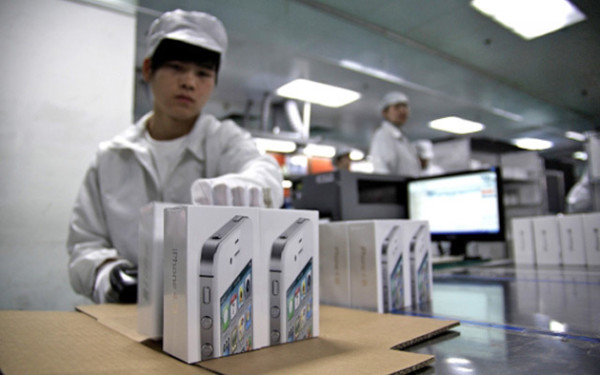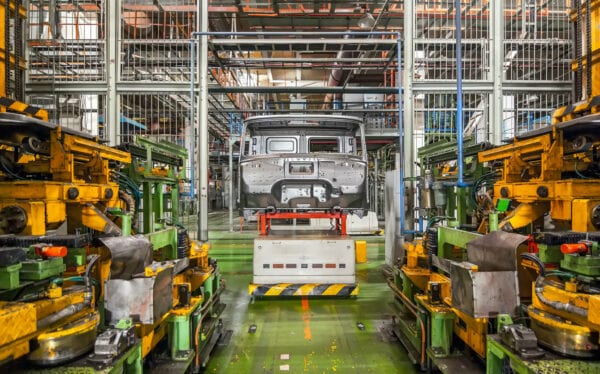As the 2019 novel Coronavirus gathers steam in a host of new locations including Italy, South Korea, and Iran, the virus — technically called by the monicker “2019-nCoV” — appears to be here for the long haul.
While we’ve already witnessed global ramifications to life, limb, geopolitics, and the environment, the virus has entered into territory where long-term economic ramifications can begin to be plotted. As of the writing of this article, the DOW has plunged close to 1000 points in a single day, erasing previous gains for the entire year. Chinese stock markets have remained artificially propped up, but as we’ll explore in this article are far from solid.
Many American commentators have wisely noted that annual Flu viruses are more deadly. And in the end Coronavius may end up less deadly than one year of global flu. Coronavirus has already shown itself to be categorically different from the flu, however, through a host of incidental conditions.
These conditions include the facts that:
- Coronavirus is largely concentrated in one of the world’s largest manufacturing and logistics centers
- The “unknown factor” of Coronavirus led to almost immediate border closings and protective measures for travellers in the form of cancelled flights
- The emergence of this Coronavirus coincided with one of the world’s largest holidays of Chinese New Year
- Coronavirus emerged in a nation with annual health expenditure per capita of roughly $593 USD (low by developed world standards)
- Before the Hubei Province was effectively quarantined, some 5 million potentially exposed residents spread to other highly populated and economically important cities throughout the region
- Due to population density, city-based and regional quarantine measures are of a scale unseen in the past
- Few China-based factories of international corporations have reopened since the Chinese New Year
Together these conditions provide a backdrop from which Coronavirus — even without explosive growth in the numbers of infected — will provide significant disruption to the lives of many as well as broader economic forces. In a Marketwatch report, some 38% of S&P 500 companies have included the word “coronavirus” in their Q1 earning guidance reports. So at least in a predictive sense, many effects of the virus area already being felt across the Pacific.
While we do not mean to downplay the pain or suffering of those afflicted by the illness in this report, we will largely stick to the economic narratives surrounding the Coronavirus. If nothing else, this will enhance the understanding of the vast majority of Chinese and regional citizens who have not contracted the virus yet who are strongly affected by the economic impacts of the virus.
These large-scale economic effects of the virus that we’ll cover in this article include:
- The Effects of Coronavirus on Particular Industries (Particularly Their Supply Chains)
- The Effects of Coronavirus on Consumers
- The Effects of Coronavirus on the Planet
- And the Potential Effects of Coronavirus on the 2020 American Presidential Election
Coronavirus and the Supply Chain
Which Industries Will Be Hit The Hardest?
Regional woes
Even with no spread to the Coronavirus, China’s recently slowing economy has already been hit hard. Midsize and small enterprises in China account for over half of China’s tax income and employ over 80% of the nation. And these are the businesses least likely to be able to weather prolonged disruptions in demand, financial services and raw materials for production.
With hundreds of millions of Chinese citizens in quarantine since late January, locations with salaried employees have continued to post payroll and overhead costs. The regional Chinese industries hardest hit in this regard include:
- Retail
- Hospitality
- Tourism
- And Manufacturing
The coincidence of Coronavirus with the Lunar New Year alone was a major disruption to the single largest spending holiday in the Chinese Year. More than $145 billion was spent this time last year on Chinese consumers travelling, dining, shopping, and paying for entertainment during the holiday. As the Lunar New Year comes to a close, China’s Ministry of Transport has noted that passenger trips within the holiday were down 50.3% from the previous year.
The expansion of the holiday for an additional week in some provinces recouped some of these losses while disproportionately affecting some of the largest employers within China who were forced to allow their workers a week of additional paid vacation. These employers included Tencent, Alibaba, and Huawei. Combined, more than 100,000 employees — often earning much higher than average Chinese wages — were given over a week or extra vacation.
In total 24 of 31 Chinese provinces extended the Lunar New Year to at least February 10th, urging millions of workers not to return to work. Many factories and stores for international businesses have still not reopened.
Within the Hubei Province specifically, deep reliance on migrant populations to work in manufacturing settings has reduced the recovery time for many factories seeking to open as many migrants returned home at the start of the virus outbreak and cannot now re-enter due to travel restrictions.
The extended closure of money changing and financial institutions hit small and medium-sized enterprises who deal with foreign clients particularly hard.
The “wealth effect” a behavioral theory suggesting consumers spend more as the value of their assets rise, may trigger a second wave of struggle for Chinese companies as stock markets in Shanghai and Shenzhen have recently recorded single day losses of 9% of their value.
In more recent days the Chinese markets have started to regain ground propped up by Central Bank policies as well as life insurers being “asked” to buy stocks throughout this economically volatile time. These artificial measures have thus far slowed market declines but may only be able to hold on for so long.
Ecommerce

With hundreds of millions of Chinese citizens essentially on house arrest since late January, sales of online goods have greatly increased.
Sales of food products from JD.com jumped by over 200% during the 10-day period leading up to February 2nd. From a period between mid-January and February JD noted that it had delivered close to 20x the amount of rice, flour, and grains as it had during the same period one year prior. For reference, that’s over 70,000 tons of grain products delivered in less than a month.
These boons to Chinese ecommerce, however, haven’t come without costs. Daily supply chains buckle causing drastic price increases for certain goods (more on this in following sections). The jobs of individuals delivering online products have become particularly perilous. As we cover in a following section, food supply chains are particularly at risk.
In the U.S., where ecommerce production is largely powered by Chinese manufactured goods Amazon is already scrambling to shore up supply chains for their next Prime Day, an event some five months from now.
Amazon is known for keeping less stock on hand than many competitors in a bid to increase efficiency, making the ecommerce giant more prone to supply chain disruptions.
Many of the American ecommerce giant’s sellers who rely heavily on Chinese production have cut their ads by as much as 50%.
Medical Supplies

Among the most noteworthy regional supply chain issues spurred by the Coronavirus are medical supplies. Within days of the virus starting, large containers of respirator masks for sale in neighboring Hong Kong had surged from $91 to $321 USD. State interventions included drastic responses in which one pharmacy was even fined over $400,000 USD for price gouging on masks.
Even in the United States, consumers seeing more routine prices for surgical masks they had hoped to mail as aid to China have seen exorbitant shipping costs raising the price of masks from $19.99 to close to $170.00 with shipping. This particularly example — noted thousands of times on online stores — was for a pack of 20 surgical masks that would normally be priced around $1 each at this volume.
We should note that the supply chain of medical equipment such as surgical masks are one of the few industries that the Chinese government has mandated remain open in a manufacturing sense. While factories in other industries have remained shut down, surgical mask manufacturing plants have remained open 24 hours a day for weeks.
It’s worth noting that while there are no FDA approved “ vaccines, gene therapies, or blood derivatives” that are manufactured in China, many raw materials used in the manufacturing of U.S. pharmaceuticals are harvested and shipped from China and southeast Asia.
India, which produces close to 40% of generic drugs sold in the United States, has taken stock and notes that they have around a two-month supply of Chinese raw materials needed to continue manufacturing.
An insider at the FDA has noted that a list of 150 drugs that are at risk due to supply chain shortages from China has been compiled by the FDA. This list has not been released to the public.
Furthermore, FDA investigators have been removed which will invariably disrupt the exportation of food, devices, and drug-related products from the nation.
Technology

Technology firms within the United States set to be affected the most by the novel Coronavirus outbreak cluster around firms that heavily rely on Chinese manufacturing and raw resource extraction.
Additionally, in recent years China has become the third largest recipient of exports from the U.S., largely in technological products and services. Any larger economic depressions that occur within China will invariably affect the sales of America’s largest tech players.
Apple has released a revised Q1 earnings guidance statement noting that “the worldwide iPhone supply will be temporarily constrained” due to Apple manufacturing facilities outside of the Hubei province.
While American social media firms have remained less impacted due to their lower reliance on the selling of physical goods and supply chains, even Facebook has been hit by the virus on lower sales of their Oculus Quest (a VR gaming) platform.
Additionally, a slew of global events for tech firms (including the Mobile World Congress and a 5,000 person Facebook marketing event) have been cancelled which may play some role in the slow down of hiring, marketing, and other measures for these firms.
Due to the many business ties across the Pacific between Silicon Valley and China, a number of organizations within the Bay Area have begun to wear masks and prohibit the use of handshakes in meetings.
As we mentioned in the previous ecommerce section, many sellers on Amazon are Chinese business or rely heavily on Chinese production for their products. In recent estimates 40% of sellers on Amazon are Chinese businesses which are likelier than not to realize at least some disruption to their product lines through these events.
In the most recent news, many Chinese consumer technology manufacturers have begun to reopen their doors except for within the Hubei Province a the center of the outbreak.
Car Manufacturers

As with in any disaster, a comingling of bad outcomes and opportunities are present in Coronavirus. Car, airplane, and farm equipment producers in China have nearly all temporarily shuttered almost all of their factories in recent weeks.
Combined with domestic (Chinese) car sales demand that has plummeted, most major vehicle manufacturers are hurting either through supply chain woes or loss of Chinese sales.
As of several days ago, car sales within China were 92% lower than the same period last year. For comparison, 59,930 vehicles were sold in the first half of February 2019 within China. During the same time period this year just 4,909 were sold.
On the supply chain side, few European, Korean, and American car manufacturers have remained unscathed. While Hyundai had remained unscathed for a time due to the location of it’s regional factories outside of China, many have begun to shutter their doors due to lacking components. Similarly — though not in quite as dire of a predicament — the European Chamber of Commerce has noted European car makers are having to locate key auto components from other nations to avoid disruptions to production.
Half of Chinese auto part production value heads to American auto manufacturers, leaving most U.S. manufacturers in a particularly tenuous situation, particularly as auto sales in the United States have remained steady. According to two analysts familiar with the matter, major U.S. automakers could start to feel dramatic supply chain issues if manufacturing in China has not resumed in full force by Mid-March.
With this said, some manufacturing plants have reopened their doors (at least to some limited degree). Starting this week, Volkswagen has reopened one of over thirty plants within China. Airbus, the European aerospace manufacturer has reopened a Chinese plant with limited output as well.
Among vehicle manufacturers within China, 41% cite staffing issues as a key issue with reopening their factories. And presumably as with all other industries within China, employees needing to pass through many checkpoints and quarantine areas while passing to and from work is a major barrier.
Textiles And Luxury Goods

Chinese consumers are known for their voracious appetite for the latest fashions. In fact, last year China accounted for 40% of luxury good spending globally. As one of several industries that relies heavily on in-person sales within China as well as tourism from Chinese nationals, global clothing brands have taken large hits from their largely absent Chinese sales for the last month.
In recent years more Chinese citizens than ever have endeavored on luxury good shopping trips abroad. This has led to a global focus within airports and transportation hubs to cater to Chinese audiences. As the Coronavirus continues, these retailers will continue to lose money with travel bans in place and potentially shift their focus to other audiences.
Additionally, while China does not make as many clothing items as in the past, they are one of the largest producers of the raw or somewhat processed materials needed to manufacture clothing and textile products.
India, one of the largest importers of Chinese materials for textile manufacturing notes that they do not have the production base for products such as synthetic yarn, synthetic fabric, and accessories like zippers and buttons. India imports close to $1 billion USD in these materials each year. In the immediate future the need to source materials from elsewhere — including locally — could rise textile prices by 3-5%. This may not seem like much. But for a nation that produces 13% of textiles globally, it will affect many businesses and consumers up the supply chain.
In high fashion, most Chinese and Hong Kong-based brands have cancelled their Paris Fashion Week showcases. Within the region, Shanghai Fashion Week and China Fashion Week have been postponed.
Abroad, Chanel and Prada cancelled seperate fashion events to be held in China in May. The National Chamber for Italian Fashion estimated that Italian fashion exports would drop over €100,000,000 in a best case Coronavirus scenario, and could double to triple this number in the event of a more prolonged situation.
Food

While urban hubs within the Hubei Province (and other quarantined provinces) have kept a steady stream of food deliveries moving from both restaurants and ecommerce sites, food supply on a whole is being tested throughout China.
The Shouguang vegetable price index, a globally important index based on the location where China grows most of its vegetables, has jumped to a multiyear high within recent weeks.
Transportation issues have left Chinese officials balancing many locations short on crucial food products at once. While cities are running low on food items like chicken meat, chicken farms are running low on crucial items like chicken feed. Poultry farmers estimate that millions of chickens could die of starvation if travel restrictions are not eased.
And as if one virus was not enough, earlier in the month a virus highly deadly to chickens killed around 4,500 chickens in Hunan while another 17,500 were culled in a preemptive fashion. This is but two months after a swine flu that spread throughout China killed around one quarter the world’s hogs, leading to raised meat prices before Coronavirus had even hit.
In response to these food and supply chain issues the Ministry of Agriculture has ordered food producers to raise output “by any means necessary” without raising prices. Though most issues within food supply relate to transportation with little change on that front. In an effort to curb price gouging the Ministry of Agriculture has handed out aggressive fines such as one for $70,000 USD to a grocery that tried to sell a $9 USD cabbage.
The 2020 Election, Hot Takes on Coronavirus
As the 2020 election approaches, we’re at a crucial junction with Coronavirus. With international bodies stalling to declare the issue a pandemic, and domestic entities stating that Americans have little reason to worry, the first two larger clusters of Coronavirus outside of China have just appeared. As Americans within international airports, Chinatowns — and throughout regions that maintain heavy contact with China (such as Seattle and the Bay Area) — start to wear respiratory masks and take preventative measures, many Americans who presumed the virus would largely remain overseas may be rudely awakened.
A Gallup poll from February 20th noted that 77% of Americans believe in the federal government’s ability to handle an outbreak of the coronavirus. This is a much higher number than similar polls asked during the height of past administrations and during virus outbreaks such as Bird Flu, Swine Flu, or Ebola.
With this said, Coronavirus has developed quickly over the last few weeks. And exposure to coverage of other highly industrialized nations falling prey to the virus may erode this confidence to some extent.
The American economy, considered by many to be President Trump’s crowning achievement while in office remains largely unscathed. But if many of the supply chain issues detailed in previous sections are allowed to develop to full seriousness, there could be dire financial consequences. As of the day of the writing of this article, the Dow has dropped roughly 1,000 points on Coronavirus fears, erasing all gains thus far this year but leaving several years of economic prosperity in valuations.
With Coronaviruses tending to falter in warmer and more humid clients, the summer could be the first real chance of the virus slowing down. Speculatively, this would allow for several months of post-Coronavirus fear leading up to the general election.
This leaves the major questions of for how long and how far will the Chinese economy drop throughout the crisis?
A successfully contained virus as of now will undoubtedly create a global economic “hiccup.” A virus that lasts months and forces many major industries to reconsider supply chains would be a growth catastrophe.
Additionally, recent scholarship has shown evidence that presidential incumbents in power during natural disasters tend to have a lower chance of being re-elected. And that during times of crisis voter turnout in American elections tends to be higher than normal. Some commentators believe the election will turn on voter turnout, with Democrats as the beneficiary.
One economic “silver lining” for the incumbency can be seen through the fact that many Chinese corporations within industries singled out by the Trade War with China have been negatively positioned due to the Coronavirus. While supply chain issues and lower Chinese demand have hurt both Chinese and American businesses, no American businesses have fully shuttered their operations due to the virus while many Chinese have. Trump has also pushed for U.S. companies to lower reliance on Chinese manufacturing. This push could be all but ensured if the Coronavirus remains around for any notable length of time.
In summary, the tumultuous election year could simply be made more tumultuous and hard to predict by the emerging global impact of the Coronavirus. What we have seen throughout this exploration of the major industries affected by the Coronavirus is that global supply chain issues are just emerging and that most major corporations are already warning investors and seeking to hedge their bets. As of the start of February it was estimated that the Chinese economy had contracted over .5%, it’s largest drop in size in several decades.